This study focuses on the WuShan copper mine's middlings as the research subject. Grinding and flotation experiments were conducted using both metal balls and alumina grinding balls as grinding media. The results indicated that, at a grinding fineness of -0.074mm with a 90% passing rate, alumina grinding balls demonstrated similar grinding performance to metal balls, with the advantage of producing less overgrinding. Using a semi-theoretical formula, appropriate alumina ball sizes were determined as Φ30mm and Φ15mm in a 4:1 ratio. Under the conditions of MA-1+Mos-2 as the combined reagent and a slurry pH of 12.0, one roughing, two scavenging, and two copper flotation steps yielded a copper concentrate with a grade of 23.26% and a copper recovery rate of 95.31%, representing a 1.12% increase in copper recovery.
IntroductionVarious factors affect grinding operations, including the properties of the material being ground, operating conditions, and the grinding mill structure. While the properties of the material and the mill structure remain relatively constant, operating conditions primarily involve grinding concentration, mill rotation speed, and the size, shape, filling rate, type, and composition of the grinding media. The size of the grinding media plays a crucial role; excessively large media can lead to overgrinding, while media that is too small results in insufficient grinding efficiency and higher energy consumption. Spherical steel balls are commonly used as grinding media, but there are other shapes available, including cylindrical, hexagonal, and forged steel media. Research has shown that spherical media are effective and energy-efficient within typical particle size ranges, producing fine-ground products. In contrast, cylindrical media provides uniform grinding, but is less effective in fine grinding. Steel balls, when used as grinding media, can introduce iron contamination, affecting the slurry potential and flotation performance. Consequently, researchers in the field of mineral processing, both domestically and abroad, have sought alternative grinding media, such as pebbles and ceramic balls. Pebbles can remove iron impurities but have irregular shapes, causing significant liner wear and requiring substantial pebble addition. Ceramic balls, on the other hand, offer advantages such as high hardness, wear resistance, no contamination, and corrosion resistance. Using ceramics as grinding media can significantly reduce energy consumption, making it a promising choice for a wide range of applications.
This paper focuses on the middlings resulting from the combination of copper concentrate and the copper I tailings at the WuShan copper mine's concentrator. It investigates the feasibility of using alumina grinding balls as a replacement for metal balls in the regrinding process, analyzing the differences in grinding products and flotation indicators between the two types of grinding media.
Experimental Procedure2.1. SampleThe chemical analysis results of the middlings are presented in Table 1, and the copper liberation analysis results of various middlings products are shown in Table 2.

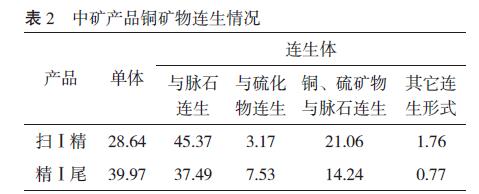
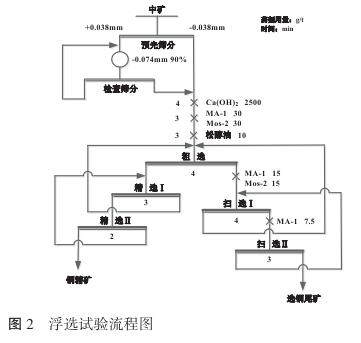
2.2. Grinding MediaA 6.25L volume ball mill with dimensions Φ240mm × 90mm was used for the grinding experiments. Grinding was conducted with both metal balls and alumina grinding balls as grinding media. The physical properties of metal balls and high alumina balls are detailed in Tables 4 and 5.
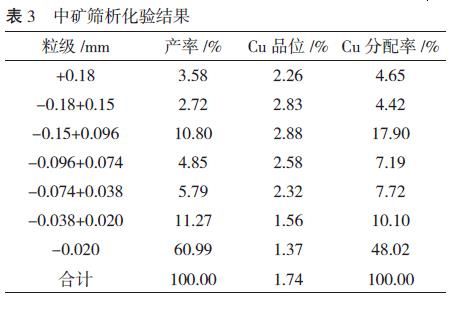
2.3. Experimental MethodThis experiment mainly investigated the feasibility of using alumina grinding balls instead of metal balls. Following the on-site process flow of the WuShan copper mine, the samples were pre-screened to a particle size of -0.038mm. The pre-screened material was then ground using different grinding media, and the ground products were screened and re-ground using the same mill. The qualified particle size, in combination with the pre-classified undersize material, was subjected to flotation tests. The grinding fineness was fixed at -0.074mm with a 90% passing rate, and the slurry was adjusted to a concentration of 35%. Lime was added to adjust the pH to 12.0, and MA-1+Mos-2 was used as the flotation reagent. One roughing, two scavenging, and two copper flotation steps were conducted to obtain copper concentrate, middlings, and copper tailings. The particle size characteristics of the ground products under different grinding media were analyzed, considering their impact on the flotation behavior.
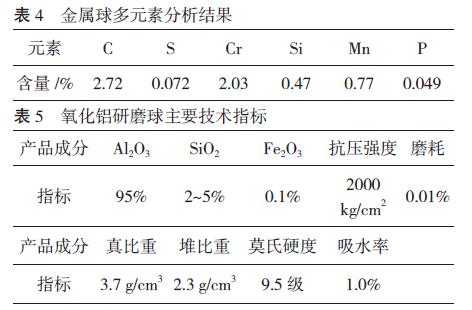
Results and Discussion3.1. Alumina Grinding Ball Filling Rate ExperimentReferring to actual production, the filling rate for metal balls was 35%, with a ball diameter (diameter) of 12mm. For alumina grinding balls with equivalent mass conversion, the ball diameter was 15mm. It has been reported that alumina grinding balls require a higher filling rate than metal balls. With a fixed grinding fineness of -0.074mm with a 90% passing rate, different filling rates for alumina grinding balls were investigated, as shown in Table 6.
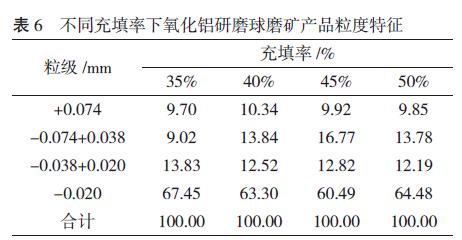
3.2. Grinding Product Particle Size Distribution CharacteristicsLaboratory grinding tests were conducted using the same mill but different grinding media. The grinding parameters included a grinding fineness of -0.074mm with a 90% passing rate, a slurry concentration of 50%, and filling rates of 35% and 45% for metal balls and alumina grinding balls, respectively. The particle size distribution characteristics of the grinding products for different grinding media are presented in Table 7, and the cumulative particle size distribution results are shown in Figure 1.
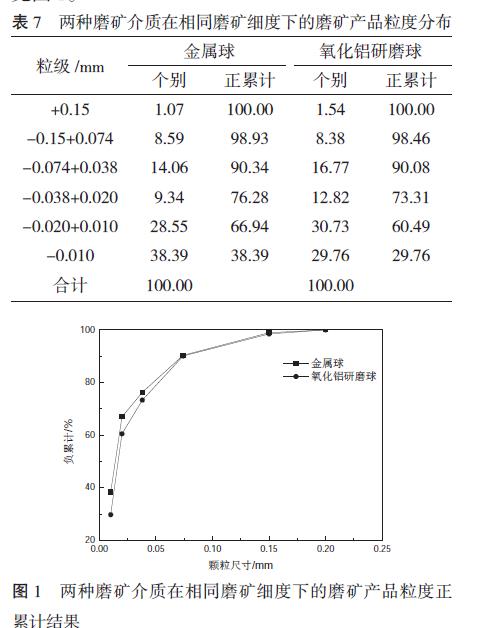
3.3. Grinding Media RatioThe ball radius semi-theoretical formula was used to calculate the precise sizes of grinding media needed for grinding different particle size ores. The formula is provided in the document. Considering the particle size analysis results, which indicated that the ore had a fine overall particle size with +0.15mm particles constituting 7.02%, it was determined that smaller grinding media sizes were suitable for fine grinding. Using 0.074mm and 0.038mm as references, appropriate ball diameters for grinding media were calculated. The calculated results indicated that the suitable diameters for alumina grinding balls were Φ30mm and Φ15mm, with a 4:1 ratio between the two. Validation experiments were conducted, with a reagent system consisting of MA-1+Mos-2 at 30+30g/t, pine oil at 10g/t, and Ca(OH)2 at 2500g/t. One roughing and two subsequent open-circuit processes were performed to obtain copper rougher concentrate. The experimental results are presented in Table 10.
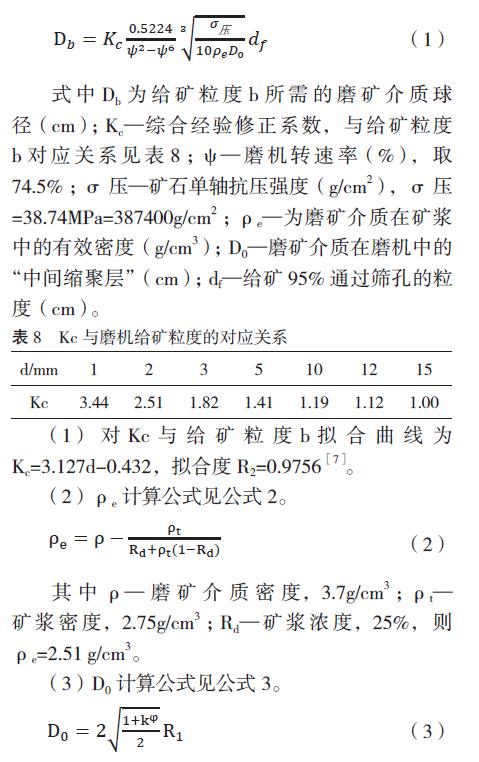
3.4. Flotation Test StudyFlotation tests were carried out for the grinding products using both metal balls and alumina grinding balls to investigate the influence of different grinding media on copper flotation. The experimental process is shown in Figure 2, and the results are presented in Table 11.
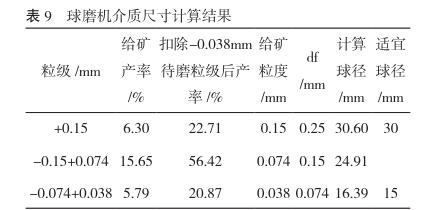
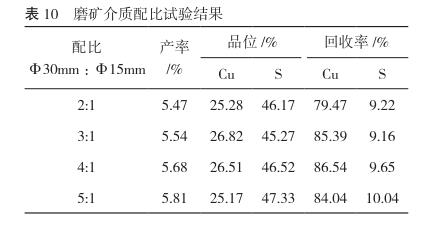

Conclusion
In the WuShan copper mine's middlings, the copper grade was 1.74%, and the sulfur grade was 27.38%. The copper minerals were moderately liberated, primarily associated with gangue minerals and sulfides.
Alumina grinding balls and metal balls as grinding media exhibited similar grinding performance. Metal balls, being smaller and denser, produced finer ground products compared to alumina grinding balls. At a grinding fineness of -0.074mm with a 90% passing rate, the proportion of -0.020mm particles was 60.49% and 66.94% for metal balls and alumina grinding balls, respectively, with alumina grinding balls showing less overgrinding.
Calculations based on the ball radius semi-theoretical formula suggested suitable ball diameters for alumina grinding balls as Φ30mm and Φ15mm, with a 4:1 ratio. Experimental results confirmed the effectiveness of this grinding media ratio. Under these conditions, copper rougher concentrate had a copper grade of 26.51% and a copper recovery rate of 86.54%.
Using alumina grinding balls instead of metal balls improved the copper recovery rate from 94.19% to 95.31% in the flotation process, with minor increases in sulfur grade and recovery rate. The gold and silver values were enriched in the concentrate, with the gold recovery rate decreasing from 25.69% to 23.52%, and the silver recovery rate increasing from 52.98% to 58.05%. Considering the value of copper, gold, and silver, the use of alumina grinding balls as grinding media is advantageous for enhancing the flotation performance.

Submit your demand,
we will contact you ASAP.

Sanxin New Materials Co., Ltd. focus on producing and selling ceramic beads and parts such as grinding media, blasting beads, bearing ball, structure part, ceramic wear-resistant liners, Nanoparticles Nano Powder

